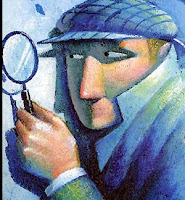Things to take note to prevent e-auction fraud when a consumer participating in an e-auction
Websites, such as eBay and Yahoo Auctions, complete millions of transactions a day by allowing anyone to post an auction. Although convenient, the anonymity of these sales requires buyers to be ever alert of auction scams. According to the statistics of National Internet Fraud Watch Information center, most of the internet frauds are based on online auctions. Reported in 2005, 45% of online frauds are based on e-auctions.
There are many types of e-auctions fraud. The following are some examples of fraud which conducted by seller:
- Shilling – Seller arrange to have fake bids placed on their items to artificially elevate high bids. If they see a legitimate high bid that doesn’t meet their expectations as the end of an auction drawn near, they might pop in to manipulate the price.
- Fake photos and misleading descriptions – Seller may distort what they can truly sell by borrowed images, ambiguous descriptions, and falsified facts.
- Selling reproductions – Where seller claims something is original, but it turns out to be a reproduction.
- Hidden shipping costs and handling fee – Sellers hide the actual shipping cost and handling fee. By the time buyers get the product, they might need to pay more than they expected.
- Failure to deliver – Sometimes buyer will never get the product even after he/she paid for it.
In order to reduce the fraud, eBay has introduced some measures such as:
- User identity verification – eBay uses the services of Equifax to verify user identities for a $5 fee. A voluntary program named Verified eBay User encourages users to supply eBay with information for online verification.
- Feedback Forum – It enables registered buyers and sellers to build up their online trading reputations. It also enables users to comment on their experiences with others.
- Escrow services – eBay recommends escrow services for items valued at more than $200 or when either a buyer or seller feels the need for additional security. The buyer sends the payment to the escrow service, which verifies the payment and alerts the seller when everything checks out. At that point, the seller ships the good to the buyer. After an agreed-upon inspection period, the buyer notifies the service, which then sends a check to the seller.
- Appraisal services – Appraisers use various methods to appraise items, including expert assessment of authenticity and condition and reviewing what comparable items have sold for in the marketplace in recent months.
- Verification – With verification, neutral third parties will evaluate and identify the condition of an item through a variety of means.
Buyers should take note when participating in an e-auction:
- Ensure the auction site is legitimate and has a secure payment process by checking security certificate of website on browser.
- Attain a clear understanding of the obligations of the buyer and the seller, as set forth in the auction details, to alleviate any confusion.
- Research the seller’s reputation and feedback history, and check with the Better Business Bureau if they are a legitimate company.
- Scrutinize the shopping procedure, the return policy, and how the payment transaction is supposed to occur.
- Offer only information pertinent to completing the deal.
Related link:
Auction Inquisitor(TM) - Free Auction Analysis Tool
http://www.auctioninquisitor.com/


0 comments:
Post a Comment